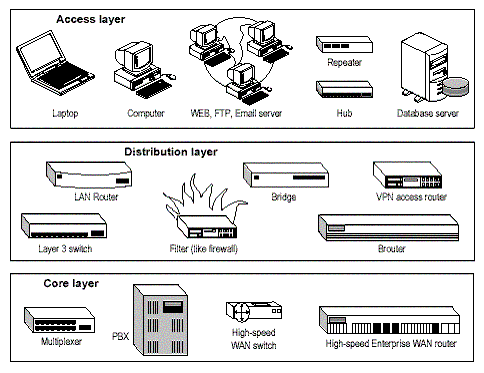CCNA Basic
CCNA (Cisco Certified Network Associate)
The CCNA exam is the qualifying exam available to candidates pursuing a single-exam option for the Cisco Certified Network Associate CCNA certification. The CCNA (640-801) exam will test materials from the new Interconnection Cisco Network Devices (ICND) course as well as the new Introduction to Cisco Networking Technologies (INTRO) course. The exam will certify that the successful candidate has important knowledge and skills necessary to select, connect, configure, and troubleshoot the various Cisco networking devices. The exam covers topics on Extending Switched Networks with VLANS, Determining IP Routes, Managing IP traffic with Access Lists, Establishing Point-to-Point connections, and Establishing Frame Relay Connections.
The following information provides general guidelines for the content likely to be included on the exam. However, other related topics may also appear on any specific delivery of the exam. In order to better reflect the contents of the exam and for clarity purposes the guidelines below may change at any time without notice
Cisco has defined a hierarchical model known as the hierarchical internetworking model. This model somplifies the task of buidling a reliable, scalable and less expesive hierarchical internetwork because tather than focusing on packet construction it focuses on the three functional areas or layers of your network.
These three functional classification as under below:
1) Core Layer
2) Distribution Layer
3) Access Layer
Core layer: This layer is considered the backbone of the network and includes the high-end switches and high-speed cables such as fiber cables. This layer of the network does not route traffic at the LAN. In addition, no packet manipulation is done by devices in this layer. Rather, this layer is concerned with speed and ensures reliable delivery of packets.
Distribution layer: This layer includes LAN-based routers and layer 3 switches. This layer ensures that packets are properly routed between subnets and VLANs in your enterprise. This layer is also called the Workgroup layer.
Access layer: This layer includes hubs and switches. This layer is also called the desktop layer because it focuses on connecting client nodes, such as workstations to the network. This layer ensures that packets are delivered to end user computers
Distribution layer: This layer includes LAN-based routers and layer 3 switches. This layer ensures that packets are properly routed between subnets and VLANs in your enterprise. This layer is also called the Workgroup layer.
Access layer: This layer includes hubs and switches. This layer is also called the desktop layer because it focuses on connecting client nodes, such as workstations to the network. This layer ensures that packets are delivered to end user computers
This pictorial explanation includes definition of CCNA written above

Comments
Post a Comment